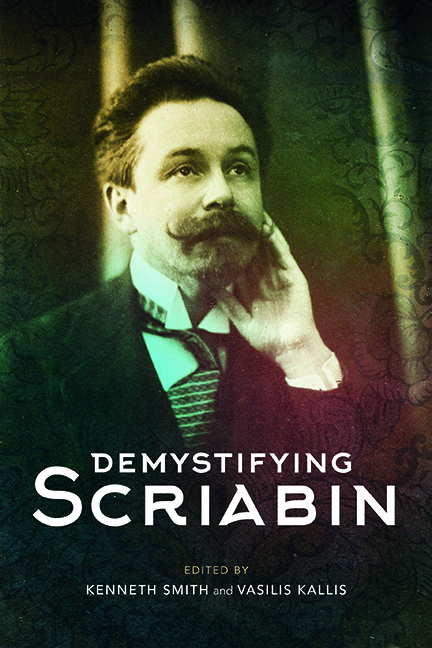11 - Setting Mystical Forces in Motion: The Dialecticsof Scale-Type Integration in Three LateWorks
Published online by Cambridge University Press: 07 October 2022
Summary
Carving a space in the harmonic landscape of the earlytwentieth century, Scriabin reveals himself in thereconciliation of its two defining ‘tonal’ paradigms– non-diatonicism and chromaticism – as first andforemost a system-builder. He did not construct thewhole edifice alone; the contours of that landscapehad been shaped over centuries, and Scriabin nowshares with his contemporaries the discovery of alabyrinth of paths to its more remote regions. Noless than for those fellow travellers, moreover,does the grammar of functional tonality remain thedriving force of his conceptions. Rarely in Scriabindoes this impetus fail to express itself also at thelevel of form. Such is the depth and scope of thecomposer's formal strategies, however, that inassessing his style one should not hope to beexhaustive. Happily, several other features recur sooften in his works and in the wider canon as toestablish a set of new, or rather expanded,conventions. In light of those conventions, thepresent chapter looks to expose Scriabin's processthrough progressive analyses of three works – theFive Preludes, Op. 74, Sonata no. 6, and Sonata no.8. Curiously overlooked in the literature, the lastof these catches Scriabin's idiosyncrasies at theirmost pointed. As eccentric in conception as it isassiduous in its execution, Sonata no. 8 promises arare kind of structure, built upon the octatonic‘tone-semitone’ scale, so familiar to Scriabin'scontemporaries, but now conducted on a level that noStravinsky, Debussy, or Ravel would have attempted.The result represents a novel engagement with thekinds of harmonic constructs being wrestled with inthe new century and stands as a highly personalisedcommentary on their potential to be incorporatedinto a range of dynamic musical forms. Among themany confrontations played out in this sonata, itremains to comment upon the fundamental conflictbetween style and tradition in which such works arenested. Perhaps, as each of the three worksscrutinised here suggests, it is not his music'soutwardly modernist, so-called transitionalproperties but a sensitivity to otherwise deeplyconservative rubrics that set Scriabin's mostradical and ‘mystical’ forces in motion.
- Type
- Chapter
- Information
- Demystifying Scriabin , pp. 196 - 220Publisher: Boydell & BrewerPrint publication year: 2022



